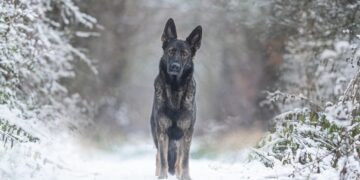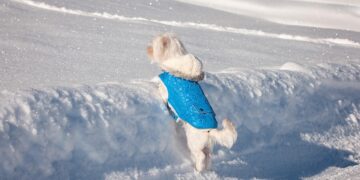Beat the Chill: Smart Dog Tips for Winter Care
As temperatures tumble and the landscape transforms into a winter wonderland, the season demands a fresh approach to canine care. Dogs, just like humans, require adjustments in their routine to tackle the dropping mercury levels and inclement weather. In this guide, you’ll discover essential tips and effective strategies to ensure your furry friend stays warm, healthy, and cheerful during the cold months.
The Importance of Winterizing Your Dog Care Regimen
The chilly season can pose a series of risks to your pet’s health and overall well-being. From hypothermia to dry skin, understanding these threats and proactively preparing for them is crucial. Adjusting your dog’s daily routine and environment should ensure that they can enjoy the winter as comfortably and safely as they do any other season.
Recognizing Cold-Weather Risks
Several potential dangers lurk during winter—some obvious, like frostbite and hypothermia, and others less visible, such as antifreeze poisoning. Each risk requires specific preventative measures or treatments that are easy to integrate into your winter pet care strategy.
Winter Care Tips for Your Dog
Caring for your dog in winter doesn’t have to be a daunting task. Here are several tips that you can easily apply to safeguard your pet during the colder months.
1. Adjust Your Walking Schedule
Avoid the coldest parts of the day, typically early morning and late evening. Opt for midday walks when temperatures are somewhat milder. Use this opportunity not only for exercise but also to soak up some much-needed winter sun, which is beneficial for both you and your pet’s mental and physical health.
2. Protective Clothing and Gear
Consider investing in a good-quality waterproof dog coat, especially if your dog has a short coat and seems bothered by the cold. Dog booties can protect sensitive paws from icy surfaces and potentially harmful chemicals like road salts and antifreeze. These simple garments significantly increase comfort and safety during walks.
3. Hydration and Nutrition
Keeping your dog hydrated and well-nourished during winter is crucial. The dry, cold air can dehydrate pets quickly, so make sure fresh water is always available. Additionally, your dog might require more calories in the winter to help maintain their energy and warmth. Consult your vet about possibly adjusting their diet or increasing food portions slightly.
4. Skin Care and Grooming
The harsh winter air can dry out your dog’s skin, leading to discomfort and flaking. Keep your dog’s coat well-groomed to ensure optimal insulation and skin health. Use pet-friendly moisturizers recommended by your vet for dry skin. Additionally, after walks, wipe down your dog’s legs, paws, and belly to remove ice, salt, and chemicals, and check for cracks in paw pads or redness between the toes.
5. Create a Cozy Sleep Space
Puppies, senior dogs, and those with weaker immune systems require a warm, well-insulated spot away from drafts to sleep. Elevate beds off the floor and add extra blankets for warmth and comfort.
6. Routine is Key
Maintain a regular schedule for feeding and exercising. Routine helps reduce the stress that dogs can sometimes experience during winter due to reduced outdoor time and activity levels.
7. Indoor Activities
When it’s too cold for regular playtimes outside, get creative indoors. Use interactive toys, teach new tricks, or set up indoor obstacle courses to keep your dog mentally stimulated and physically active.
FAQs: Common Winter Care Questions
Below are some common questions pet owners have during winter, providing concise and insightful answers to help demystify winter dog care.
Is it safe to let my dog play in the snow?
Yes, dogs can play in the snow, but monitoring playtime is crucial to prevent them from getting too cold or ingesting dangerous substances concealed in the snow.
How do I know if it’s too cold for my dog?
Watch for shivering, anxious behaviors or reluctance to keep walking. These are signs your dog is uncomfortably cold and potentially at risk for hypothermia.
Should I bathe my dog in the winter?
Bathe your dog less often during winter months to avoid drying out their skin. When necessary, use warm water and consider a moisturizing rinse recommended by your veterinarian.
Can my dog catch a cold?
While dogs don’t catch colds in the same way humans do, they can still contract upper respiratory infections that are similar to colds. If you notice coughing, sneezing, or lethargy, consult your vet.
Conclusion
Winter requires special considerations when it comes to dog care. With the insightful tips provided, you can ensure your pet enjoys a healthy, happy, and active winter. Just like dressing ourselves in an extra layer, taking proactive steps to address the needs of our canine companions can make the season enjoyable and stress-free for everyone involved.














































